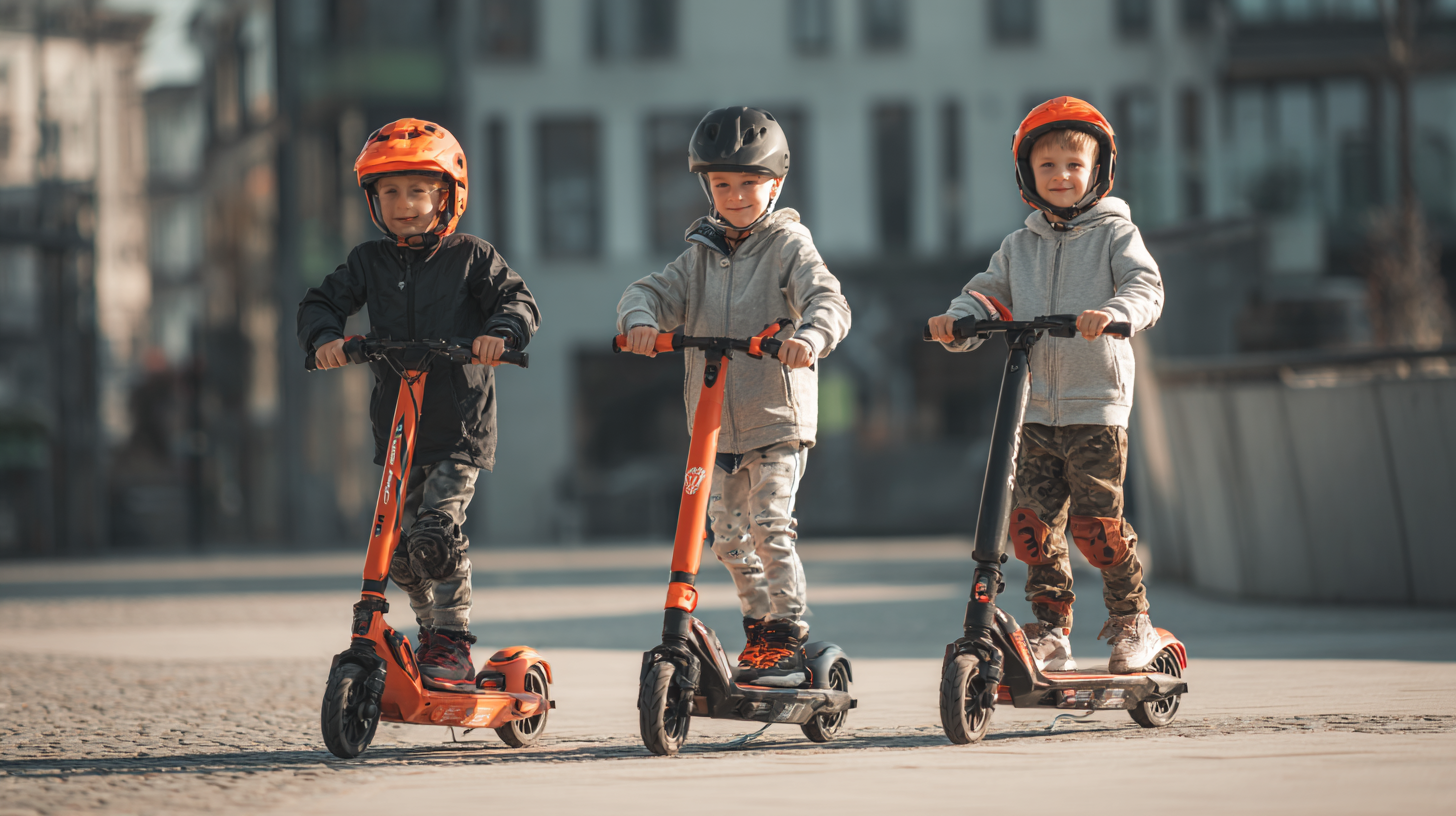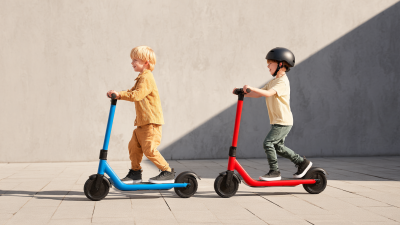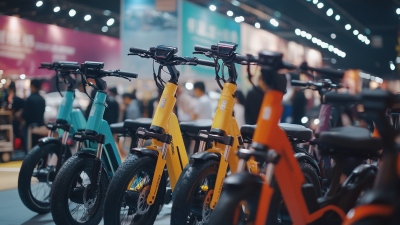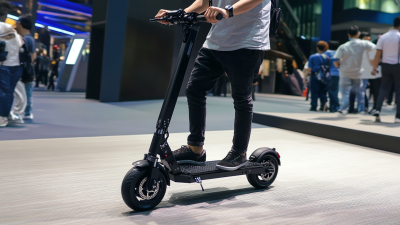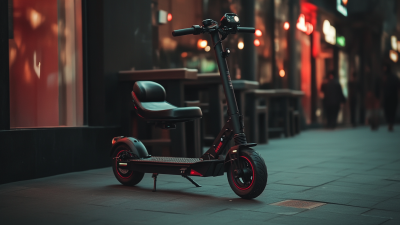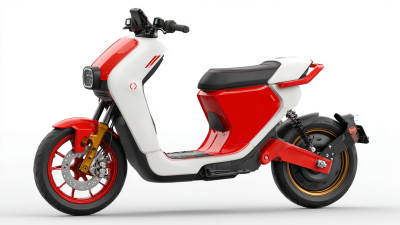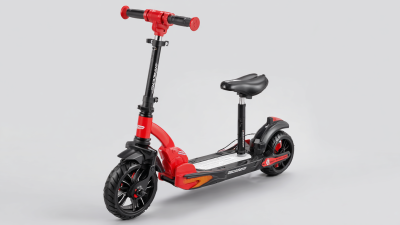When it comes to choosing the best electric scooters for kids, it's crucial for parents to base their decisions on reliable data and industry insights. According to a market research report by Grand View Research, the global electric scooter market is expected to reach USD 41.98 billion by 2027, indicating a growing demand for electric scooters across various age groups, including children. Furthermore, Reports and Data highlight that the increasing focus on eco-friendly transportation options is making electric scooters an attractive choice for families. With features such as safety mechanisms and adjustable speed settings, these scooters are designed not only for enjoyment but also for ensuring the well-being of young riders. As you prepare to select the right electric scooter for your kids, understanding these factors becomes essential in making an informed choice that aligns with their needs and your expectations.
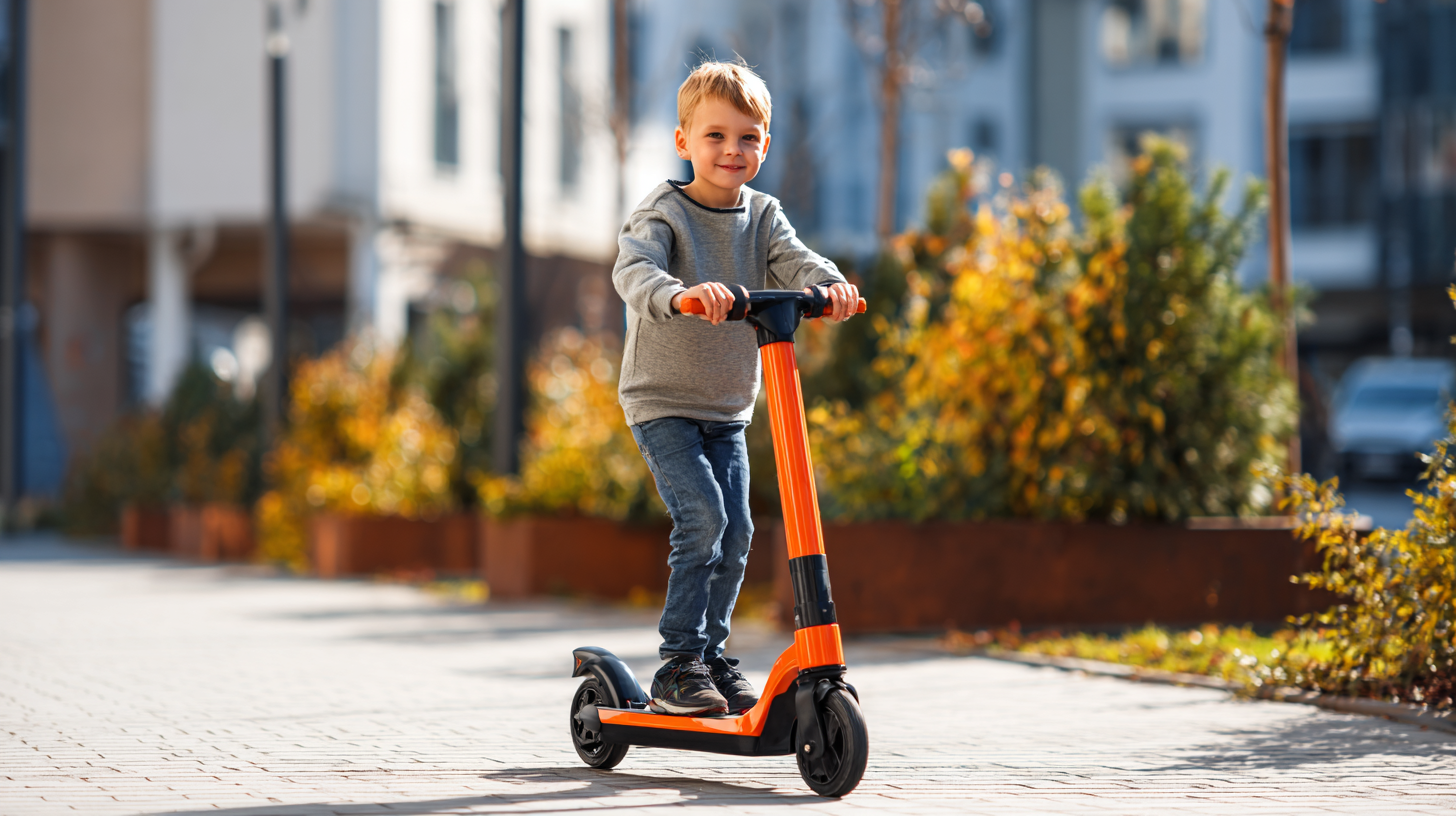
When selecting electric scooters for kids, one of the most vital factors to consider is the weight capacity. According to a report by the U.S. Consumer Product Safety Commission, scooters that exceed their weight limit can lead to decreased performance and increased risk of accidents. A scooter that is not rated for a child's weight may not operate effectively, potentially causing mechanical failures such as brake malfunctions or reduced speed. For children, where safety is paramount, adhering to weight specifications ensures a secure riding experience.
Further emphasizing this point, a study from the International Journal of Pediatrics indicates that incidents involving children's scooters are often linked to inappropriate weight capacities. Their analysis revealed a 30% increase in injury rates when children used scooters that were not designed for their size and weight. Hence, caregivers should ensure that the electric scooter selected has a weight capacity that comfortably accommodates the child’s weight, providing not just safety but also an optimal riding experience. This approach will foster a more enjoyable and secure environment for children as they explore the fun of riding electric scooters.
When choosing an electric scooter for kids, evaluating battery life is a crucial factor. According to a recent report by the Consumer Product Safety Commission (CPSC), the average battery life for children's electric scooters ranges between 60 to 120 minutes of continuous use, depending on the model and battery type. This duration is influenced by factors such as the weight of the child, terrain, and riding style. For parents, it’s important to select a scooter that provides enough ride time before needing a recharge, ensuring that kids can enjoy their time without frequent interruptions.
Additionally, the type of battery used in the scooter can significantly impact its performance and longevity. Lithium-ion batteries, for example, are more prevalent in higher-end models and typically offer longer usage times and quicker recharging capabilities compared to lead-acid batteries. A study from the Electric Scooter Industry Association indicates that scooters equipped with lithium-ion batteries can provide up to 40% longer ride times while maintaining a lightweight and efficient design. Therefore, when considering the purchase of an electric scooter for children, prioritizing those with superior battery life can enhance the overall riding experience and safety for young riders.
When choosing an electric scooter for children, safety should be the top priority, and understanding speed settings is crucial. Children have different levels of experience and skills, making it essential to select scooters with optimal max speeds that align with their age and riding capabilities. For younger kids, scooters with a maximum speed of 5 to 8 miles per hour provide a safe environment to practice balance and coordination. This speed limit allows them to enjoy their ride while minimizing the risk of accidents.
For older children, scooters with speeds up to 15 miles per hour can be appropriate, provided they have prior riding experience and proper safety gear. At these speeds, riders can experience a more thrilling ride while still maintaining control. However, it is vital for parents to monitor their children's riding experience and ensure they understand the importance of adhering to speed limits and safe riding practices. By prioritizing appropriate speed settings, parents can encourage their children to enjoy the fun of riding electric scooters while keeping safety at the forefront.
| Scooter Model | Max Speed (mph) | Recommended Age | Weight Capacity (lbs) | Battery Life (hours) |
|---|---|---|---|---|
| Model A | 8 | 8+ | 120 | 3 |
| Model B | 10 | 10+ | 150 | 4 |
| Model C | 12 | 12+ | 175 | 5 |
| Model D | 7 | 7+ | 100 | 2 |
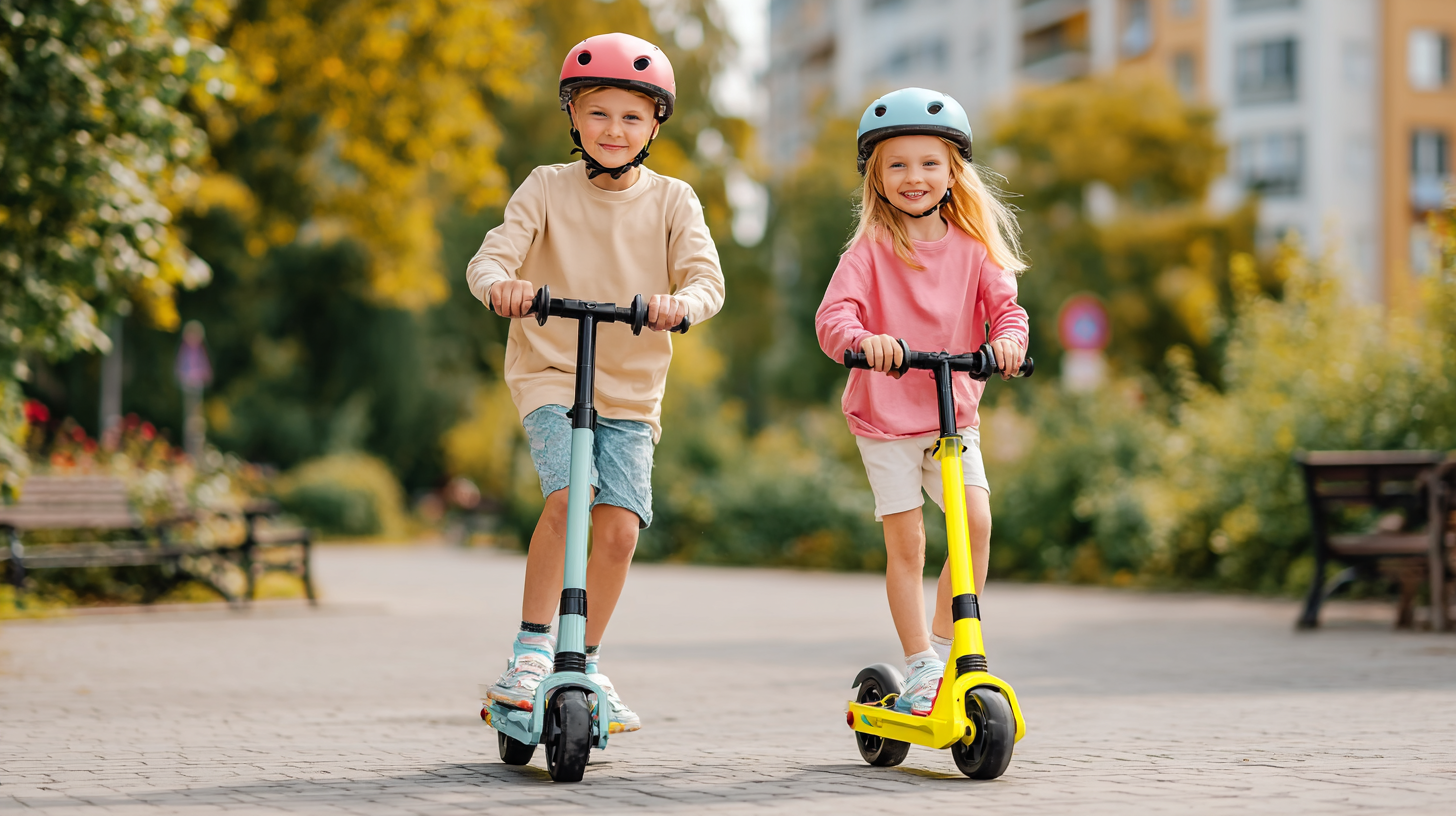 When selecting electric scooters for kids, durability standards play a crucial role in ensuring safety and longevity. The materials used in manufacturing the scooter significantly impact its overall build quality. For instance, scooters made from high-grade aluminum or reinforced plastic offer a lightweight yet robust structure, ideal for withstanding the rough handling typical among children. It's essential to choose scooters with reliable construction that can endure bumps, drops, and the occasional collision, minimizing the risk of damage or injury.
When selecting electric scooters for kids, durability standards play a crucial role in ensuring safety and longevity. The materials used in manufacturing the scooter significantly impact its overall build quality. For instance, scooters made from high-grade aluminum or reinforced plastic offer a lightweight yet robust structure, ideal for withstanding the rough handling typical among children. It's essential to choose scooters with reliable construction that can endure bumps, drops, and the occasional collision, minimizing the risk of damage or injury.
In addition to the materials, the design and build quality also contribute to the scooter's resilience. Features such as a sturdy frame, solid wheels, and well-constructed handlebars enhance stability and performance. Ensuring that the scooter meets or exceeds safety standards can further provide peace of mind for parents. Checking for additional safety certifications and user reviews can help in identifying models that are not only appealing to children but also built to last, aligning with a family’s need for a reliable, enjoyable ride.
When choosing the best electric scooters for kids, safety features should be a top priority for parents. First and foremost, ensure that the scooter is equipped with a reliable braking system. Look for models that offer both hand-operated and electronic brakes, as this combination allows for quicker stopping and can significantly reduce the risk of accidents. Additionally, scooters with anti-lock braking systems provide added safety by preventing wheel lockup during sudden stops.
Another crucial aspect to consider is the scooter's construction and design. Choose scooters with a sturdy frame and non-slip footboards to enhance stability and grip while riding. Furthermore, safety measures such as reflective lights and a bright horn can increase visibility and alert others to the child's presence, especially in low-light conditions. Helmets and protective gear should also be mandatory to shield against potential falls and injuries. By prioritizing these essential safety features, parents can help ensure a secure and enjoyable riding experience for their children.
